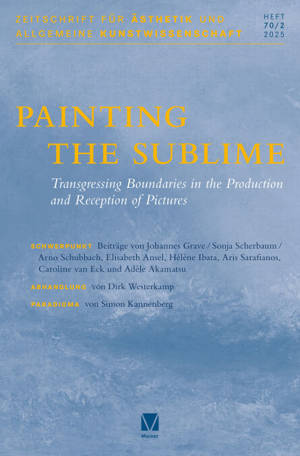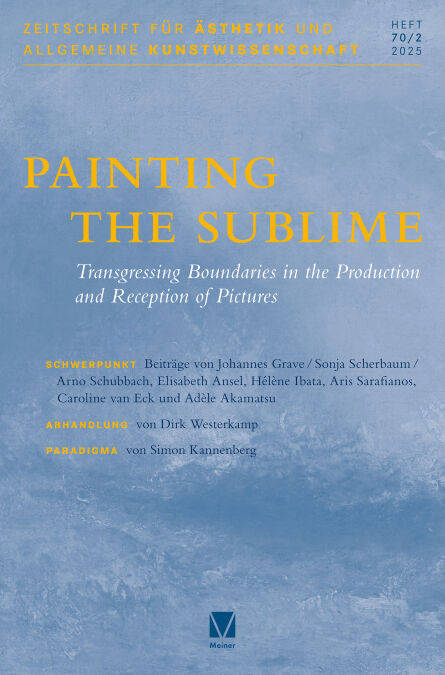
- Afhalen na 1 uur in een winkel met voorraad
- Gratis thuislevering in België vanaf € 30
- Ruim aanbod met 7 miljoen producten
- Afhalen na 1 uur in een winkel met voorraad
- Gratis thuislevering in België vanaf € 30
- Ruim aanbod met 7 miljoen producten
Zoeken
Painting the Sublime E-BOOK
Transgressing Boundaries in the Production and Reception of Pictures
€ 74,99
+ 74 punten
Omschrijving
In the second half of the eighteenth century, the category of the sublime became a central concept of the fledgling field of aesthetics. Originally located at the margins of discourses on rhetoric, it became a source of fascination in literary and artistic production, but quickly proved to be a complicated matter, especially for the visual arts. Artists and philosophers contended with the question of whether the sublime can be depicted at all or whether the events that can cause viewers to experience the sublime can be adequately represented in painting. The contributions of this special issue suggest, however, that the contested visual representability of the sublime might have spurred visual artists to devise innovative, experimental solutions in the eighteenth and nineteenth century.
Specificaties
Betrokkenen
- Uitgeverij:
Inhoud
- Aantal bladzijden:
- 164
- Taal:
- Engels
- Reeks:
Eigenschappen
- Productcode (EAN):
- 9783787350889
- Verschijningsdatum:
- 12/11/2025
- Uitvoering:
- E-book
- Beveiligd met:
- Digital watermarking
- Formaat:

Alleen bij Standaard Boekhandel
+ 74 punten op je klantenkaart van Standaard Boekhandel
Beoordelingen
We publiceren alleen reviews die voldoen aan de voorwaarden voor reviews. Bekijk onze voorwaarden voor reviews.







